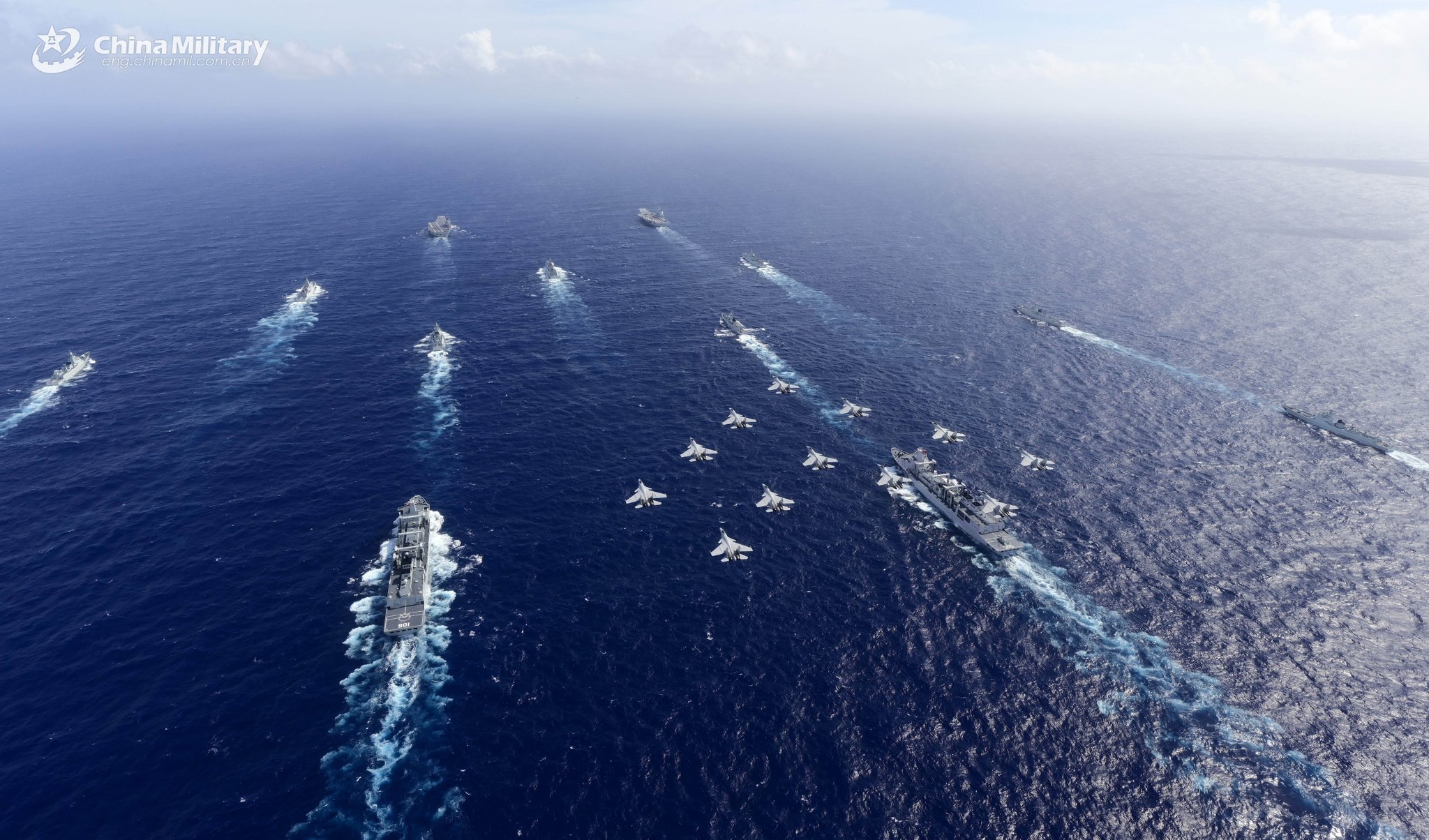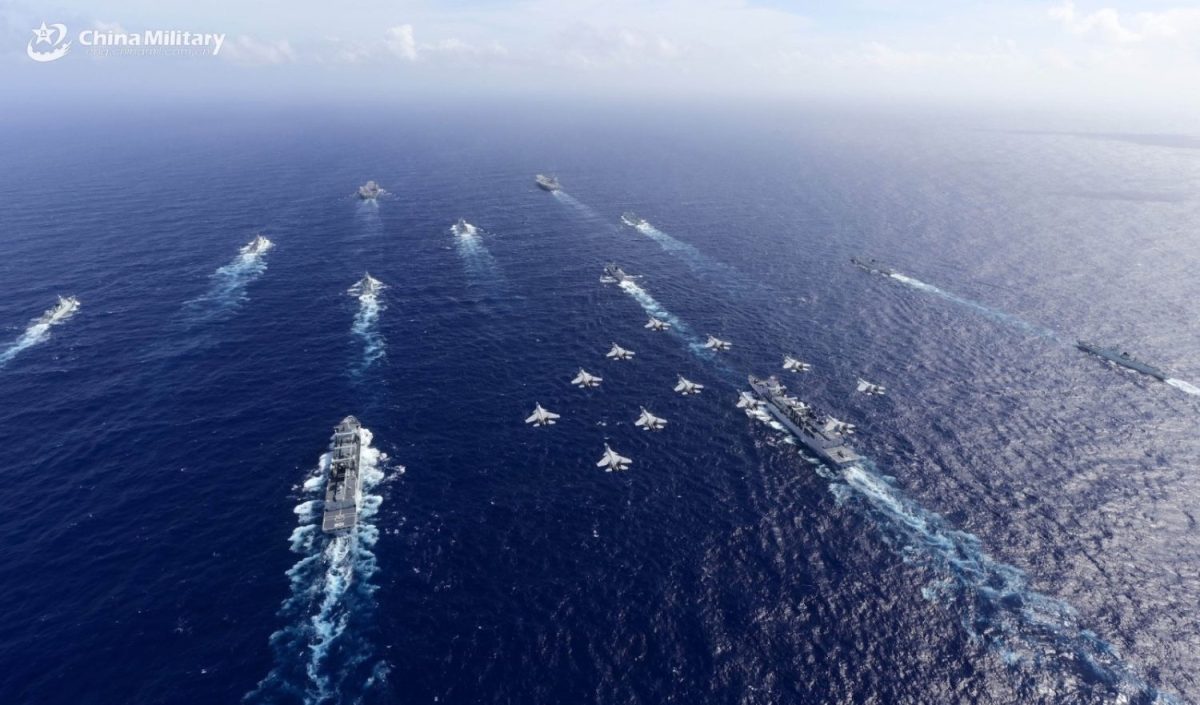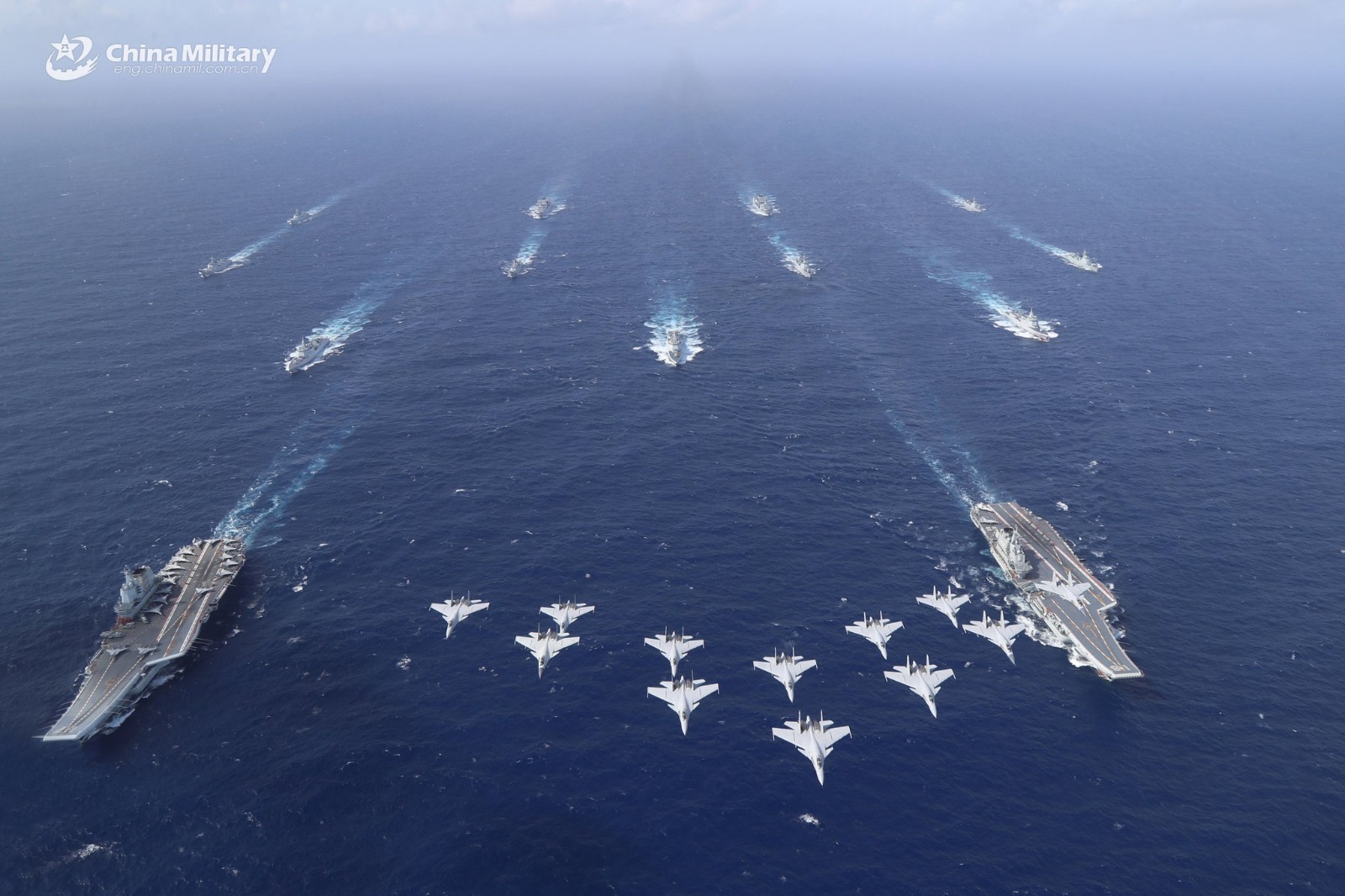In a spectacular first, the two aircraft carriers of the People’s Liberation Army Navy (PLAN)—Liaoning and Shandong—conducted dual aircraft carrier formation exercises in the South China Sea. Two new variants of the J-15 ‘Flying Shark’ carrier jets also broke cover.
According to the state-owned publication Global Times, the exercise was part of the Liaoning aircraft carrier formation’s regular high-seas real-combat training.
“In the South China Sea, the Liaoning and Shandong ship formations conducted a dual carrier formation exercise for the first time to hone and improve the combat capability of the aircraft carrier formation system,” the Chinese Navy said in a statement.
The Navy further said that the exercise took place in the South China Sea, East China Sea, and Yellow Sea and featured multiple subjects in real combat situations. The mission was reportedly conducted over the National Day vacations and the Mid-Autumn Festival. The service did not, however, mention the exact date of the drills.
This development is significant as China is expanding the role and reach of its aircraft carriers, which are symbolic of a country’s influence and dominance.
Last month, for instance, all three Chinese carriers were at sea simultaneously. The simultaneous deployment, albeit short-lived, represented a massive achievement for the PLAN, which has been striving to assert its naval influence in the Indo-Pacific region.
Moreover, China currently has only two operational aircraft carriers. The third, Fujian, is undergoing testing and is expected to enter service by 2025.
Furthermore, the dual carrier drill is making headlines because exercises with two aircraft carriers and the support ships that accompany them demonstrate the capability of a Navy to deploy and maintain a significant number of air and sea forces. Experts have observed that the exercise conducted by both carriers is in line with China’s blue-water naval ambitions.
These exercises also call for a high degree of operational flexibility. Wang Ya’nan, the chief editor of Beijing-based Aerospace Knowledge magazine, told Global Times that the two carriers can split the work, with one handling surface attacks and the other handling air superiority and air defense. They can also use shared escort vessels for defense and reconnaissance, allowing for task specialization.

In addition to the two aircraft carriers, the dual-carrier group featured an extended surface action group comprising a variety of surface combatants and support vessels. These included three Type 055 Renhai class destroyers, four Type 052D Luyang III class destroyers, one Type 054A Jiangkai II class frigate, and two Type 901 Fuyu class quick combat support ships.
More importantly, two new variants of China’s carrier-capable J-15 Flying Shark—the J-15B and the J-15D—have officially broken cover.
Two New J-15 Variants Are Now In Service
During the demonstration, a combined formation flyover of J-15A/B fighters from the Carrier Air Groups was seen. Though the J-15A has been around for a while, it is the first time that a single-seat J-15B, an upgraded and advanced variant of the PLAN’s only carrier-capable aircraft, is seen in the visuals published by PLAN.
Interestingly, the J-15B is a Catapult-Assisted Takeoff Barrier-Arrested Recovery (CATOBAR) variant of the aircraft developed for operations aboard the Fujian aircraft carrier, the first Chinese carrier to have Electromagnetic Aircraft Launch System (EMALS) catapults that allow CATOBAR operations.

So far, the J-15s in use have only been equipped for short takeoff but assisted recovery (STOBAR) operations compatible with Liaoning and Shandong carriers. The drills would give the PLAN its first taste of CATOBAR operations, which is essential to maximizing Fujian’s performance as EMALS are complex systems.
A popular Chinese military watcher and analyst on X pointed out that at least 13 J-15B were involved in the drills. In a very interesting observation, another PLA watcher, Rick Joe, stated that the J-16B variant is distinguished from its predecessor by its light grey radome.
This variant is reportedly more capable than the J-15 and J-15A variants. The new J-15B has 4.5th-generation features, including a modern cockpit and a new active electronically scanned array (AESA) radar. However, the observers pointed out that the aircraft is still powered by the AL-31F engines despite having been tested with the homegrown WS-10 turbofans. The aircraft has been outfitted with a launch bar and improved nose landing gear for CATOBAR operations.
In addition to the J-15B, another variant of the aircraft, the much-awaited electronic warfare (EW) variant, the J-15D, broke cover in these drills. At least two of these aircraft, which are frequently projected as an answer to US EA-18G Growlers, were spotted in the photos published by the PLAN.

According to reports, the J-15D prototype made its first flight in late 2016. This new variant features large wingtip electronic warfare pods, and the basic infrared search and track (IRST) sensor and cannon have been removed, as previously reported by EurAsian Times.
The People’s Liberation Army (PLA) does not hesitate to periodically display its cutting-edge military platforms, as it did with the J-15D two years ago, even though it usually keeps Chinese technological advancements under wraps. For example, the J-15D with electronic countermeasure (ECM) pods on its wings was sighted on the deck of the Shandong aircraft carrier in July 2022, following the carrier’s first planned repair and modernization.
More recently, China Central Television (CCTV) aired a clip in March 2024 showing two pods installed on what was believed to be a J-15D.
Additionally, earlier this year, a mock-up of the J-15, predicted to be a J-15D, was also seen on the aircraft carrier Liaoning along with the next-generation J-35 carrier-capable aircraft.
The development of an EW aircraft with carrier capability further highlights the increasing importance of electronic warfare in contemporary warfare. A Chinese military expert who did not want to be named told the EurAsian Times, “All advanced militaries in the world are expanding EW capabilities, and China is no exception. They have made EW variants out of existing platforms like the J-10 and J-16.”
The appearance of these aircraft is noteworthy since the induction of a next-generation carrier-capable aircraft is still a few years away, and China has been looking to upgrade its carrier operations amid escalating tensions in the Indo-Pacific region. Moreover, until the Fujian enters service, operating these jets aboard the STOBAR-capable carriers will add more teeth to the PLAN’s existing capability and allow the pilots to hone their skills for future carrier operations.
- Contact the author at sakshi.tiwari9555 (at) gmail.com
- Follow EurAsian Times on Google News




